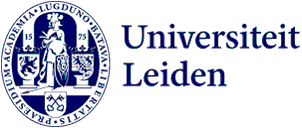Admission requirements
Mandatory course for students enrolled in the bachelor’s programme Security Studies.
Description
Security is a key to survival for any living organism; life is full of perils and threats, both physically, environmentally and socially. Thus, it is vital that organisms construct mechanisms to maximise their security, such as generating a stable food supply, optimising environmental conditions to promote growth and wellbeing, and creating shelter.
This course aims to lay the foundations for this Bachelor programme by providing students with a solid conceptualisation of the notions of security and safety, and by exploring these concepts through the lenses of a wide range of disciplines. The course will also teach students to apply this knowledge to modern-day challenges.
The course begins with a general introduction into the (social) sciences and the notions of disciplinarity, multidisciplinarity and interdisciplinarity. Thus, students are gently introduced to the academic context in general, and this particular Security Studies program in particular. Next, the notions of security and safety are contextualised. The key scientific disciplines that have studied these concepts are discussed, and main lenses and methods are presented. The changing meaning of security and safety is also addressed: these concepts have changed significantly throughout history, in light of cultural, societal and technological developments. What it meant to be secure in the past differs greatly from what it means to be secure today. This also entails that security and safety challenges have changed for governments and other actors responsible for their governance, as we will discuss.
The notions of security and certainty both build on particular conceptions of uncertainty and risk. In the second half of the course we delve into these notions, and the disciplinary lenses that have been developed to study them, especially in Safety Science. We will see discuss strengths and weaknesses of dealing with, or responding to, risks through the most commonly used approaches, most notably risk management.
Next, we will contrast this with common understandings of risks from Classical Security Studies, explaining the history and dominant paradigms in this field as developed in International Relations.
We will end this course by integrating findings, concepts and methods from Safety Science and Security Studies, laying the groundwork for a unified perspective on security and safety, which is at the heart of this Security Studies programme.
Course objectives
Students will acquire knowledge and understanding of centrality of the concepts of security and safety, as well as of their current role in a globalised world.
Students will acquire knowledge of theories, models, principles, and empirical data relating to security and safety from the disciplines of (1) philosophy, (2) public administration, (3) international relations and political science, and (4) computer science.
Students will be able to identify which types of actors are relevant to the study of safety and security in a globalised world, to understand how actors, consequences and impact are interlinked in relation to security and safety.
Students will be able to identify new trends and threats relating to security and safety, and to contextualise these within a broader societal context.
Students will be able to make constructively critical judgements with respect to security as a theme.
Timetable
On the right side of programme front page of the E-guide Bachelor Security Studies you will find links to the website and timetables, uSis and Blackboard.
Mode of instruction
14 lectures and self-study.
Course Load
Total study load of 280 hours
Contact hours: 42
Self-study hours: 232
Examination: 6
Assessment method
Mid-term exam: 20%
Final exam: 80%
The calculated final grade must be at least 5.50 to pass the course.
Compensation rule
Only assessments with the weight of 30% and lower are compensable. This means that one does not have to pass an assessment if it weighs 30% or less in order to pass the course, if the average of all assessments combined is at least a 5.50. In addition, assignments weighing up to and including 30% are not re-sitable, meaning that if one failed an assessment of 30% or less one is not allowed to redo it and that assessment must be compensated by the other assessment.
Passed partial grades obtained in year 2018-2019 remain valid during year 2019-2020. Failed partial grades should be obtained in 2019-2020 and cover the course content offered in year 2019-2020. The calculation strategy of year 2018-2019 will be applicable to the new, final grade. Also this year's compensation rule will be applicable to last year’s grades. Meaning if one failed this year’s mid-term exam one is not allowed to redo it and that assessment must be compensated by the grade for the final exam.
More information will be available on the Blackboard page.
Resit
Students will be permitted to resit the final exam if they have a calculated grade lower than 5.50 or with permission of the Board of Examiners.
The resit for the final exam will take the same form.
Blackboard
Course page will be available one week in advance.
Reading list
Collins, A. (2016). Contemporary security studies. Oxford university press.
Information on journal articles and other readings will be announced on Blackboard.
Registration
Use both uSis and Blackboard to register for every course.
Register for every course and workgroup via uSis. Some courses and workgroups have a limited number of participants, so register on time (before the course starts). In uSis you can access your personal schedule and view your results. Registration in uSis is possible from four weeks before the start of the course.
Also register for every course in Blackboard. Important information about the course is posted there.
Contact
dr. R.S. Prins r.s.prins@fgga.leidenuniv.nl
